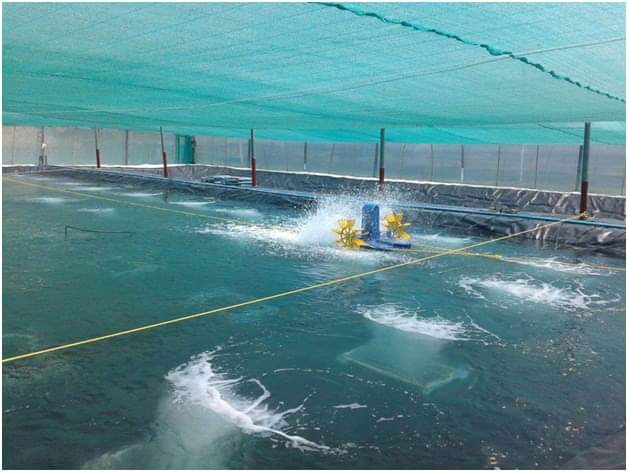IMPORTANCE OF MINERALS IN SHRIMP CULTURE
By Sri S.Rajamanickam
Asst.chief Technical officer
ICAR-CIBA
Marine shrimp are traditionally cultured in coastal or estuarine waters with salinities ranging from 15 to 40 ppt. However, shrimp farming of both Tiger and Pacific white leg shrimps is now being done successfully in many parts of the country using low to medium saline waters (0 to 10 ppt) from irrigation drains, rivers etc. Depending on their source, waters available for shrimp culture are of different salinities, and therefore possess different ionic composition. Such low saline waters may require supplementation of minerals to achieve desired productivity.
“Importance of minerals”
Minerals have many physiological functions to maintain acid-base balance and are important in osmo-regulation. Among major minerals, calcium (Ca) and magnesium (Mg) are considered to be very important for molting and new shell formation for culture Shrimp.
“Mineral requirements for shrimp farming”
In addition to basic water quality parameters, the mineral profile of water is important in P.vannamei culture. Actual mineral requirement is difficult to quantify due to the variability in the ionic profiles of pond waters. The bioavailability of minerals will be a function of their concentration in water. In general, levels of minerals in pond water have to be more or less similar to the levels in seawater diluted to the same salinity. However, pond water characteristics of even the very closely located ponds will not be exactly the same.
“Ionic ratios “
Ionic ratios are quite different between seawater and different source waters. The ratio of Na (Sodium) to K (Potassium) and Mg (Magnesium) to Ca (Calcium) in water appears to be more important than pond water salinity. Improper ratios of these minerals in water lead to osmotic stress which has a cascading effect on growth and survival of shrimp. The Na:K and Mg:Ca ratios should be preferably 28:1 and 3.4:1 respectively. It should be noted that although high levels of Ca also seem to be necessary, the ratio of Ca:K, which is about 1:1 in seawater, may also be important. In waters where the Ca:K and Na:K ratios are high, the addition of K to reduce these ratios in low saline waters increases the shrimp growth.
“Mineral supplementation through water “
In order to maintain optimum concentration of minerals and ionic balance, modifications in mineral supplementation through water and diets is possible. Water modification approaches are more effective compared to the dietary modification strategies though the cost of ionic fortification is comparatively high when the culture area is large. Leaching of the water soluble minerals from the diets is a limitation for dietary supplementation. Ionic levels in ponds with low saline waters have to be raised to match their concentration in seawater diluted to the same salinity. In order to obtain desired mineral levels at different water salinities, the water salinity (in ppt) is to be multiplied by the factors shown for each mineral. Seawater of 35 ppt salinity is regarded as standard.
” Application of commercial products for supplementation of minerals “
A number of commercial products are available in the market (potassium chloride, magnesium chloride, mineral mixtures etc.) to correct ionic ratio imbalances in pond water. Many commercial products do not mention the composition of minerals. Utmost caution should be exercised while using such commercial products since studies have indicated lack of standard and efficacy. Dose (g/m3) of a product required to be applied to the pond for a particular mineral may be calculated using the following formula. Dose (g/m3)= Desired concentration of particular mineral (mg/L) Õ Percentage of that particular mineral in salt/100. For example, if you want to use magnesium sulphate (Epsum salt) containing 10% Mg to increase Mg concentration by 25 mg/L: Dose of salt=25 Õ 10% /100=250 mg/L. Generally under high or low saline waters with optimum mineral concentration and proper ionic ratios, there is no need of supplementation. However, throughout the culture period, major minerals are lost due to soil adsorption, shrimp harvest, draining at harvest and seepage, altering their concentration.
Hence, there is a need to evaluate the mineral concentrations in pond waters regularly and to supplement them in case of any deficiency. Farmers are advised to use the calculations to know the concentration of ions at desired water salinity and the quantity of the product to be applied for supplementation of ions. Farmers are advised to exercise caution while applying the commercial products.
References:on request.


